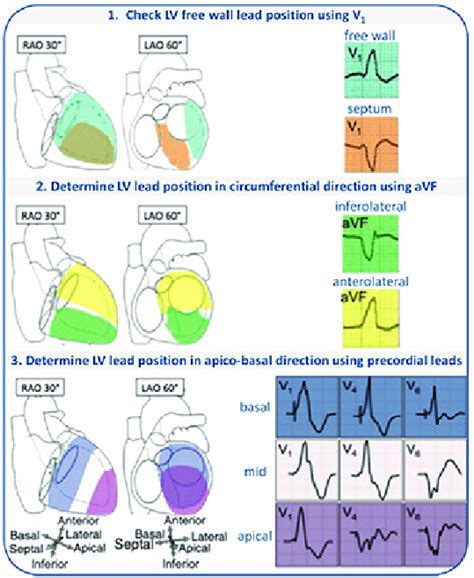lv leads - what is an epicardial lead : 2024-11-01 lv leads Improved outcome to CRT has been associated with the placement of a left ventricular (LV) lead in the latest activated segment free from scar. The majority of randomized controlled trials investigating . lv leads16233. $ 7,650. + $150 for shipping. US. Promoted. Rolex Datejust 36. Champagne Diamond New Old Stock. $ 8,500. + $50 for shipping.
Scopri l’orologio Explorer 36 in acciaio Oystersteel e oro giallo sul Sito Ufficiale .
lv leadsACUITY™ X4 Quadripolar LV leads are the first and only LV leads uniquely designed to promote non-apical pacing options, helping physicians to pace from an optimal site for . LV Lead Location and Baseline Clinical Characteristics. The LV lead position was assessed in 799 patients (55% patients ≥65 years of age, 26% female, 10% LVEF ≤25%, 55% ischemic cardiomyopathy, and .Left Ventricular Leads. Optimal left ventricular (LV) pacing requires placement of the lead in a stable location that is free of significant phrenic nerve stimulation (PNS) and is likely to . New techniques have been described that utilize directional and support catheters to allow direct advancement of the lead into the target branch. These tools .

Surgical LV lead placement offers the advantage of direct access to the lateral left ventricular wall. Direct visualisation provides an almost unrestricted . In CRT-D patients with LBBB, posterior/lateral LV lead location was associated with a significant reduction in long-term all-cause mortality (hazard ratio [HR], .Quartet™ LV Lead Provides Excellent Outcomes. When used in conjunction with our innovative suite of quadripolar technology-enabled CRT solutions, the Quartet LV lead supports improved patient .Markedly increased LV voltages: huge precordial R and S waves that overlap with the adjacent leads (SV2 + RV6 >> 35 mm). R-wave peak time > 50 ms in V5-6 with associated QRS broadening. LV strain pattern with .
lv leadsQuartet™ Quadripolar LV Lead More pacing flexibility without compromising lead stability. Built on the proven QuickFlex™ µ lead platform, the Quartet quadripolar LV lead offers superb deliverability . LV lead threshold management according to manufacturer. Fig. 1 Legend: Panel A: LV automatic threshold test for Medtronic devices (Vector Express), displaying loss of capture with intrinsic RV conduction. The channels displayed are: EGM 1 = atrial channel; ECG = the “large” RV dipole (coil to can) with A-V markers; EGM 3 = the “LV cathode .Quartet Quadripolar LV Lead More pacing flexibility without compromising lead stability. Built on the proven QuickFlex™ µ lead platform, the Quartet™ quadripolar LV lead offers superb deliverability with exceptional stability and performance. Studies reflect an implant success rate averaging approximately 97%. 1,2 The LV lead position was assessed in 799 patients by means of coronary venograms and chest x-rays recorded at the time of device implantation. The LV lead location was classified along the short axis into an anterior, lateral, or posterior position and along the long axis into a basal, midventricular, or apical region. However, LV epicardial lead placement is associated with increased rates of complications such as renal insufficiency and infections. 5 With the advancements made in tools and techniques for LV lead delivery, the implanting electrophysiologist now has a variety of approaches to adopt when encountering challenging LV lead implants to . The LV lead location was classified in 797 patients with CRT-D: 569 patients with left bundle branch block (LBBB) and 228 with non-LBBB. Leads were classified into apical (n = 83) and nonapical (n = 486), with the nonapical LV leads further categorized into anterior (n = 99) and posterior/lateral (n = 387) within LBBB. .Overview of our Attain Left-heart Leads and Delivery Systems, including model numbers, lengths, and specifications for our quadripolar and bipolar . Attain Stability™ Quad MRI SureScan™ active fixation LV lead is designed with active fixation and quadripolar lead technology to allow for precise placement and secure fixation during implant To facilitate stable left ventricular (LV) lead placement, it is practical first to place the right ventricular (RV) pacing lead and then to advance the LV lead into the coronary sinus (CS) branch, leaving the sheath in place. After the right atrial (RA) lead is positioned, the LV lead guiding sheath is removed, and the LV lead is sutured in place.
$7,457.50
lv leads